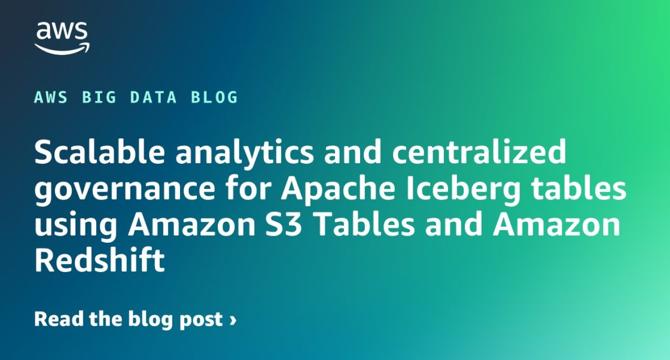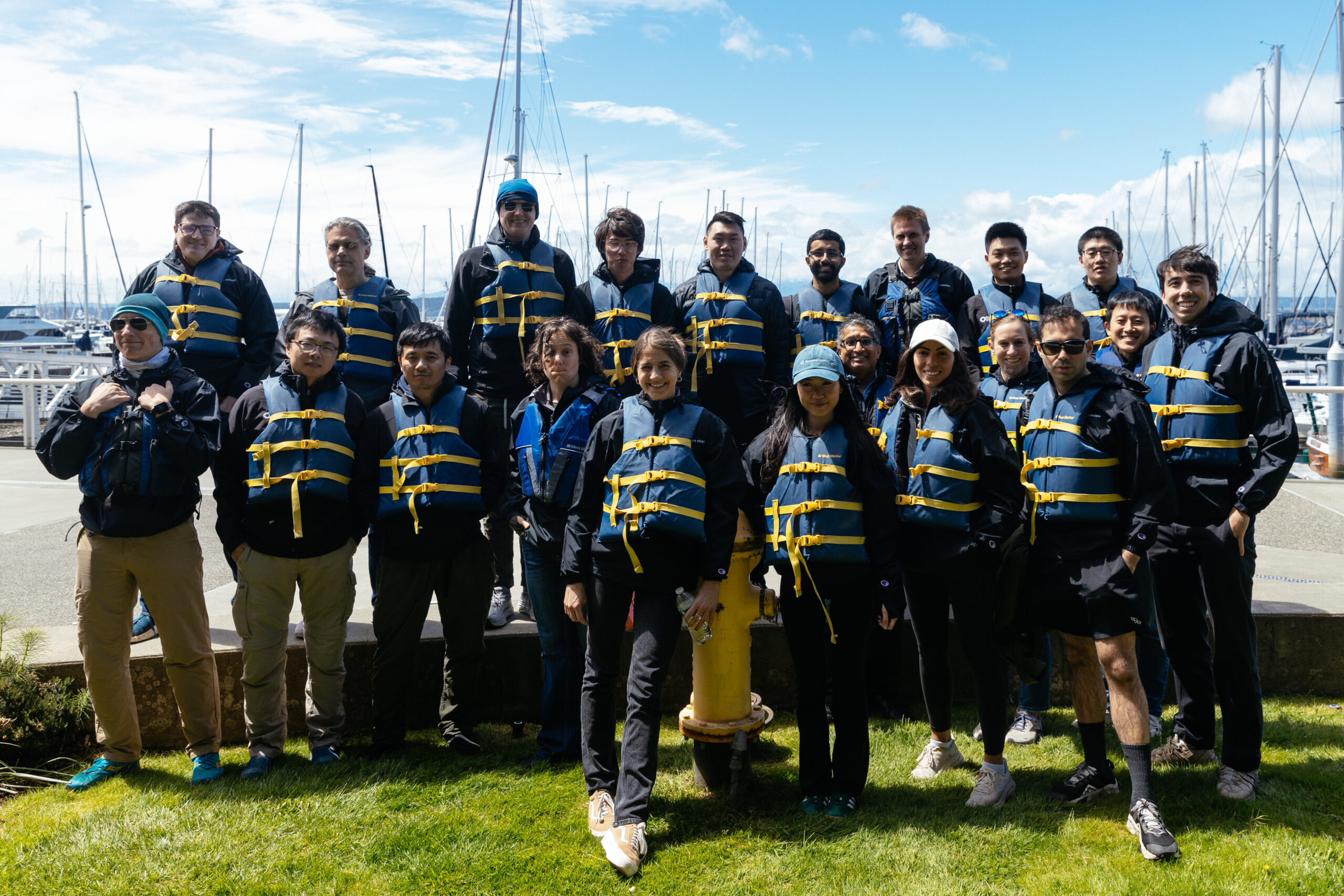Big Data News
Precisely
74

Smart Banking in 2025: The Intelligent Technologies Defining CX and Operations
- Banks focusing on agility and data-driven customer-centricity are thriving in the evolving financial landscape.
- The webinar 'Smart Banking in 2025' discussed the shifts in banking towards digital transformation, compliance, and customer experience.
- Challenges include fragmented systems, siloed data, and lack of system integration hindering omnichannel customer engagement.
- The key solutions highlighted were integration of communication systems, data consolidation for personalized experiences, and centralized customer data for future-ready operations.
Read Full Article
4 Likes
Precisely
387

Smart Banking: The Intelligent Technologies Defining CX and Operations
- In a recent American Banker webinar, the focus was on smart banking and intelligent technologies defining customer experience and operations in the financial sector.
- Banks need to prioritize agility, data-driven customer-centricity, and digital transformation to thrive in an evolving market.
- Integrating communication systems, consolidating data, and focusing on data-driven personalization are key strategies for enhancing customer service and loyalty.
- The session concluded with a call to focus on clean, consolidated data, building empowering engagement systems, and keeping the customer at the center to drive agility and success in the banking industry.
Read Full Article
23 Likes
Dzone
321

Image Credit: Dzone
Data Lake vs. Warehouse vs. Lakehouse vs. Mart: Choosing the Right Architecture for Your Business
- Choosing the right data architecture is essential in today's data-driven world, and this article compares data warehouse, data lake, data lakehouse, and data mart through real-world business scenarios.
- Data lakes store vast amounts of raw data in their original format, offering flexibility in data processing and analysis, making them ideal for organizations collecting diverse data types.
- A real-life example illustrates a tech company utilizing data lakes for storing large-scale logs and unstructured user interaction data for product analytics.
- Data warehouses collect processed data from various sources, best suited for reporting, data analysis, and historical data storage within organizations.
- Data warehouse usage in large retail chains involves analyzing customer purchases and sales data from sources like POS systems, online transactions, and CRM data.
- Data lakehouse combines the strengths of data warehouse and data lake, offering scalability and supporting semi-structured, structured, and unstructured data for real-time fraud detection in financial services.
- Data mart, a subset of data warehouses, provides specialized data access without the complexity, enabling self-service analytics for specific departments like a sales team in a pharmaceutical company.
- Real-world examples and tools for each architecture type are provided, highlighting the data flow processes from sources to respective data repositories.
- End users vary from data scientists using data lakes for exploratory analysis to analysts creating reports in data warehouses and sales teams accessing specialized data marts.
- By understanding the unique functions and applications of data lake, warehouse, lakehouse, and mart, businesses can make informed decisions aligning with their organizational goals and data requirements.
Read Full Article
19 Likes
Amazon
25

Image Credit: Amazon
OpenSearch UI: Six months in review
- OpenSearch UI, launched in November 2024, has gained popularity across various customer use cases, with significant feature enhancements focused on observability and security analytics over the past 6 months.
- The serverless OpenSearch UI dashboard provides a managed interface for data analytics and visualization, uniting data sources like Amazon OpenSearch Service domains, Serverless collections, and AWS services like CloudWatch and Security Lake.
- Integration with Amazon Q Developer enables AI-powered analytics using natural language queries, simplifying complex data analysis and providing actionable insights.
- Generative AI capabilities in the Discover page support anomaly detection, visualization, and alert summaries for quicker issue identification and resolution.
- Enhancements in security include SAML workflows via IAM federation for seamless access control, AWS PrivateLink support for secure private access within VPCs, and workspace-level privacy settings.
- Expanded data access features now include support for cross-cluster search across multiple connected OpenSearch Service domains and regional expansions to Asia Pacific (Hong Kong) and Europe (Stockholm).
- The improvements in OpenSearch UI aim to enhance user-friendliness, availability, and security, reflecting a commitment to simplifying data analytics experiences.
- Authors of the article include Muthu Pitchaimani, a Search Specialist interested in networking and security, and Hang (Arthur) Zuo, a Senior Product Manager passionate about generative AI and cloud technologies.
- For more details on using OpenSearch UI in Amazon OpenSearch Service and updates, refer to the provided resources for a comprehensive understanding of the platform's capabilities.
- The progress made in OpenSearch UI's evolution over the past 6 months showcases a focus on improving user experience, security, and accessibility, aligning with customer needs and preferences.
Read Full Article
1 Like
Amazon
80

Image Credit: Amazon
Scalable analytics and centralized governance for Apache Iceberg tables using Amazon S3 Tables and Amazon Redshift
- Amazon Redshift supports querying data stored in Apache Iceberg tables managed by Amazon S3 Tables, with a focus on production environments and centralized governance for data access and permissions.
- The post demonstrates how to set up an Apache Iceberg data lake catalog using Amazon S3 Tables, enabling fine-grained access controls and unified analytics with Amazon Redshift.
- It covers steps like creating an S3 Table bucket, loading data using Amazon EMR, granting permissions with Lake Formation, and running SQL analytics on the data.
- Prerequisites include adding a Redshift service-linked role, creating an Amazon EC2 key pair, and utilizing various AWS services like Redshift Serverless, S3 Tables, Glue Data Catalog, Lake Formation, and Spark with EMR.
- Users are guided to create resources using a CloudFormation template, load sample datasets into S3 buckets, and connect Amazon Redshift to query Apache Iceberg data stored in Amazon S3 Tables.
- Detailed steps are provided for creating S3 Tables, loading data, granting permissions to IAM users, and querying the data in both Redshift and S3 Tables.
- The post concludes by showcasing how data can be combined from S3 Tables and local Amazon Redshift tables in a single query for a seamless analytics experience.
- It emphasizes cleanup steps to delete deployed resources using AWS CloudFormation and invites feedback on the features presented.
- Authors of the post include Satesh Sonti, a Sr. Analytics Specialist Solutions Architect with expertise in data platforms, and Jonathan Katz, a Principal Product Manager on the Amazon Redshift team and Core Team member of PostgreSQL.
Read Full Article
4 Likes
Precisely
67

IBM’s New MFA Offering is a Step in the Right Direction – But Only Part of the Picture
- IBM's introduction of native support for multi-factor authentication (MFA) on IBM i signifies the growing importance of MFA in cybersecurity.
- Although IBM's MFA offering is a positive step, Precisely Assure MFA provides more comprehensive and flexible protection for IBM i environments.
- Modern cyber threats and the prevalence of credential theft emphasize the necessity of robust security measures like MFA.
- MFA enhances security by requiring verification through multiple factors such as passwords, devices, and biometrics, significantly reducing unauthorized access risks.
- Precisely Assure MFA excels in user-friendly authentication, centralized management, integration with IAM platforms, incremental MFA definitions, ransomware protection, flexible control, and support for older OS versions.
- Every organization should prioritize implementing MFA on IBM i systems for enhanced security.
- Consider crucial factors when choosing an MFA solution, including hardware and software compatibility, policy adaptability, and integration with IAM platforms.
- Evaluate your MFA strategy thoughtfully to ensure it aligns with your organization's evolving needs and requirements.
- Enhance your MFA deployment with Precisely Assure MFA to establish a scalable and comprehensive security solution tailored to your business.
- Security is an ongoing journey, and MFA plays a crucial role in strengthening access control defenses for IBM i customers.
Read Full Article
4 Likes
Siliconangle
154

Image Credit: Siliconangle
Big-data visualization company Domo smashes Wall Street’s targets and its stock soars
- Domo Inc., a business intelligence and data visualization software firm, surpassed Wall Street's expectations with a strong earnings and revenue beat in late trading.
- The company reported a first-quarter loss of nine cents per share, exceeding the consensus estimate of a 19-cents-per-share loss, with revenue meeting expectations at $80.1 million.
- Domo has transitioned to a consumption-based pricing model, impacting its sales productivity positively by over 60% and posting adjusted operating income of $1.03 million, beating analyst estimates.
- The company provided a robust profit forecast for the current quarter, expecting earnings between three and seven cents per share, and slightly raised its full-year revenue guidance for fiscal 2026 while lowering its earnings target.
Read Full Article
9 Likes
Siliconangle
267

Image Credit: Siliconangle
Snowflake gains momentum with solid earnings and revenue beats
- Snowflake Inc. beats earnings and revenue expectations for the first quarter of the new fiscal year, with earnings per share at 24 cents and revenue surpassing $1 billion.
- Product revenue for Snowflake reached $996.8 million, up 26% from a year ago, while the company posted a net loss of $429.9 million.
- Snowflake sets a product revenue target of $1.035 billion to $1.04 billion for the current quarter, with a full-year revenue forecast of $4.325 billion at the midpoint.
- Snowflake expands product offerings with support for Apache Iceberg table format and achieves Department of Defense Impact Level 5 Provisional Authorization, leading to a stock price increase of more than 7% in late trading.
Read Full Article
16 Likes
Siliconangle
354

Image Credit: Siliconangle
DataHub gets $35M in funding to provide the context needed for AI reliability and safety
- DataHub, an open-source metadata startup, has secured $35 million in Series B funding led by Bessemer Venture Partners.
- The funding will help DataHub accelerate the development of its context management platform for AI models and AI agents.
- DataHub's platform aims to address challenges in data accessibility, reliability, and context awareness faced by enterprises in managing their AI initiatives.
- The startup plans to invest in its open-source community, research, development, and scaling its go-to-market and customer success teams to enhance its AI governance capabilities.
Read Full Article
20 Likes
Dzone
8

Image Credit: Dzone
IoT and Cybersecurity: Addressing Data Privacy and Security Challenges
- The Internet of Things (IoT) has revolutionized connectivity but has raised concerns about security and privacy due to the increasing number of IoT devices, making cybersecurity crucial.
- To address security challenges, regular updates, encryption, multi-factor authentication, and network segmentation are essential for securing IoT devices and networks.
- Data privacy concerns in IoT include data collection transparency, security vulnerabilities, and the lack of user control over personal information.
- Major IoT security challenges include weak authentication, lack of encryption, insecure communication protocols, and difficulty in patching and updates.
- Best practices for securing IoT devices include updating software, changing default passwords, securing routers, reviewing privacy settings, and enabling multi-factor authentication.
- Government regulations like GDPR in the EU and industry standards play a crucial role in ensuring data protection and privacy rights with IoT systems.
- Organizations are investing in cybersecurity solutions to enhance encryption, network security, and combat cyber threats in the IoT ecosystem.
- Future IoT security and privacy require manufacturers to implement strong encryption solutions, users to understand privacy risks, and collaboration among stakeholders to ensure harmonized security practices.
Read Full Article
Like
Siliconangle
366

Image Credit: Siliconangle
DataOps.live debuts new Dynamic Suite data toolkit for Snowflake
- DataOps.live Inc. has launched a new software toolkit called Dynamic Suite for Snowflake Inc. customers to manage data more efficiently.
- The Dynamic Suite includes Dynamic Delivery and Dynamic Transformation components to assist in managing Snowflake objects and data preparation workflows.
- Dynamic Delivery helps implement CI/CD pipelines for automation, while Dynamic Transformation uses the open-source dbt tool to organize business data for analysis.
- DataOps.live aims to enhance data management in Snowflake's ecosystem with additional tools planned under the new multiyear product partnership.
Read Full Article
22 Likes
Dzone
225

Image Credit: Dzone
Securing the Future: Best Practices for Privacy and Data Governance in LLMOps
- LLMs have seen rapid development over the years, becoming integral to various applications from chatbots to enterprise solutions.
- The focus is shifting towards security, compliance, and data protection as LLMs are widely adopted across industries.
- 2025 marks a crucial period for organizations to safeguard their AI programs amidst regulatory shifts.
- Key areas of LLMOps operations include deployment, management, and optimization of large-language models.
- Data governance, privacy, security, and compliance play vital roles in ensuring secure AI deployment.
- Challenges include data privacy, leakage, compliance complexity, adversarial threats, and model security.
- Best practices in LLMOps involve comprehensive data governance, security controls, privacy techniques, and regulatory alignment.
- Measures include governance frameworks, regular audits, access controls, encryption, privacy-preserving techniques, and ongoing security training.
- Emerging trends focus on zero-trust AI security models and automated privacy guardrails for enhanced protection.
- Priority must be given to privacy and data governance to ensure ethical AI practices and trust while scaling AI capabilities.
Read Full Article
13 Likes
Dzone
17

Image Credit: Dzone
Building an AI/ML Data Lake With Apache Iceberg
- Apache Iceberg offers a strong open-source table format for building efficient data lakes for AI and ML workloads.
- It provides features like ACID transactions, optimized metadata handling, schema and partition evolution, time travel, and hidden partitioning.
- The architecture for AI/ML data lakes includes layers for data sources, ingestion, storage, processing, and ML/AI applications.
- Iceberg's metadata design makes it well-suited for Machine Learning workloads, avoiding performance issues with millions of files.
- Implementing a feature store with Iceberg involves setting up the Spark environment, creating tables, and registering features and metadata.
- Creating point-in-time correct training datasets, comparing table snapshots for ML analysis, and executing the main pipeline are essential tasks in working with Iceberg feature stores.
- Benefits of using Apache Iceberg for AI/ML workloads include data quality, schema flexibility, efficient queries, and scalability for large ML applications.
- Iceberg's capabilities around data consistency, schema evolution, metadata management, and query performance contribute to faster model development and better AI/ML outcomes.
- In conclusion, Apache Iceberg is transforming how data lakes are built for AI/ML, offering essential features for modern data architecture.
- Implementing a Machine Learning feature store with Iceberg ensures data consistency, reproducibility, and improved query performance for enhanced AI/ML results.
- As ML workloads expand in complexity, frameworks like Apache Iceberg play a critical role in supporting AI/ML data needs for both new and existing platforms.
Read Full Article
1 Like
Amazon
294

Image Credit: Amazon
Empower financial analytics by creating structured knowledge bases using Amazon Bedrock and Amazon Redshift
- Amazon Bedrock Knowledge Bases with Amazon Redshift enable easy querying of complex financial data through natural language prompts, benefiting users with varied technical skills.
- Structured data retrieval via Amazon Bedrock allows for natural language processing on data sources like Redshift, simplifying data analysis for all users.
- Developers can implement advanced data querying features by connecting to APIs, enabling convenient exploration of financial data in plain English.
- Using Redshift data, generative AI applications for tasks like text generation and sentiment analysis can be efficiently built.
- Financial professionals can now use natural language queries such as customer account details, with Bedrock translating them into optimized SQL for quick insights.
- The solution outlined involves creating a conversational AI assistant for financial inquiries, utilizing sample datasets and Amazon Redshift as the knowledge base.
- Steps to implement the solution include loading financial datasets to Redshift, enabling Amazon Bedrock's large language model access, and creating knowledge bases with structured data.
- Security and compliance measures are crucial when integrating Bedrock with Redshift, and cost considerations apply for the natural language to SQL conversion.
- Benefits of using generative AI applications in structured data analysis include enhanced customer experience, improved operational efficiency, and streamlined data warehouse usage.
- By facilitating natural language interactions, this approach accelerates decision-making, making complex data analysis accessible to non-technical users in the finance industry.
Read Full Article
17 Likes
Siliconangle
367

Image Credit: Siliconangle
Alation acquires Numbers Station to expand AI agent capabilities for enterprise data workflows
- Alation Inc. acquires Numbers Station Inc., a startup specializing in AI agents for data workflows.
- Numbers Station's AI agents automate complex data workflows, enabling natural language interaction with data.
- The acquisition aims to combine Numbers Station's AI capabilities with Alation's metadata foundation for intelligent applications that facilitate real-time decision-making.
- Numbers Station team joins Alation post-acquisition, ensuring continuity for customers and further development of AI-native applications for enterprise data intelligence.
Read Full Article
21 Likes
For uninterrupted reading, download the app